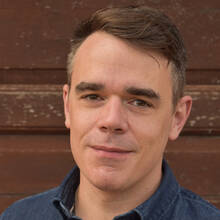The share of Catholics going to Mass even a few times each year has fallen off significantly compared with the number before the Covid pandemic, but U.S. Catholics overall are largely optimistic about their church and its leaders, a new survey finds.
In 2022, a near-majority of Hispanic Catholics, or 47 percent, reported attending religious services at least a few times each year, down from 65 percent in 2019. For white Catholics, the drop was even sharper, down to 45 percent in 2022 from 73 percent just three years earlier.
Less than half of all Americans, 43 percent, said they attended services at least a few times each year, down from 54 percent in 2019.
But U.S. Catholics overall are largely optimistic about their church and its leaders, a new survey finds.
The findings were made public Tuesday in a new report from the Public Religion Research Institute, “Religion and Congregations in a Time of Social and Political Upheaval,” which includes insight into the religious trends of all Americans.
“After the tumultuous last couple of years, we see a continued shuffling of affiliation among Americans and decline in church attendance,” Melissa Deckman, the C.E.O. of the research group, said in a press release. “Yet Americans who remain active churchgoers are quite satisfied with their own congregations.”
When it comes to how one views the role of faith, 14 percent of Hispanic Catholics and 9 percent of white Catholics said that religion is “the most important thing in their lives.” The report found that 16 percent of Americans overall agreed with that statement, down from 20 percent in 2013.
Catholics who have left the church make up significant percentages of Americans who claim no religion or a different tradition.
Among unaffiliated Americans who once belonged to a religious group, 37 percent say they were formerly Catholic. Similarly, relatively high rates of white evangelical converts said they were once Catholic (38 percent), as did 46 percent of white mainline Protestants who joined from another tradition.
Catholics who have left the church make up significant percentages of Americans who claim no religion or a different tradition.
As for Catholics who joined the church from another faith tradition, 78 percent reported coming from another Christian background while 15 percent said they came from a non-Christian tradition.
The majority of Americans, or 67 percent, identified as Christian. About a quarter of Americans identified as unaffiliated. Nearly four in 10 religiously unaffiliated Americans who once belonged to a religious group said they were Catholic.
Unaffiliated Americans cited a variety of reasons they left their faith.
The most common reason, cited by 78 percent of respondents, was that they stopped believing in the teachings of their religion. Another 43 percent cited negative religious teachings about the treatment of L.G.B.T. people, while roughly one-third said their family was not religious while growing up. Thirty-two percent said scandals involving church leaders was a reason they left their faith tradition.
As for current Catholics, a sizable number said they consider leaving.
The church has room to improve when it comes to welcoming people and diversifying its leadership, the survey found.
Among white Catholics, 20 percent reported they are “thinking about leaving their current religious tradition,” as did 13 percent of Hispanic Catholics.
When it comes to the diversity of congregations, majorities of both white and Hispanic Catholics report worshiping in largely segregated communities. Seventy-seven percent of white Catholics said their church was mostly white, while 74 percent of Hispanic Catholics said their church was mostly Hispanic.
The poll also asked Americans what they hear from their church leaders, and majorities of both white and Hispanic Catholics said abortion and “poverty and inequality” each come up “often or sometimes,” while 41 percent of each group said racism is a topic of conversation.
The church has room to improve when it comes to welcoming people and diversifying its leadership, the survey found.
When asked if their church was “welcoming and kind” to everyone, including L.G.B.T. people, Hispanic Catholics were more likely to disagree than white Catholics, 32 percent to 25 percent. Additionally, 39 percent of Hispanic Catholics said they would like more L.G.B.T. people in church leadership, as did 25 percent of white Catholics. Sixty-four percent of Hispanic Catholics said they would like more women in church leadership positions, compared with 44 percent of white Catholics. Additionally, Hispanic Catholics are also more likely than white Catholics to say that they would like their church to talk more about political divisions (30 percent to 18 percent), health care (50 percent to 30 percent) and transgender rights (33 percent to 17 percent).
Still, 80 percent of white Catholics and 81 percent of Hispanic Catholics said they are “optimistic about the future of their church.” Similarly high rates of both groups reported they are proud to say they are associated with their church and are happy with their church leadership.
The report is based on a 2022 online survey of 5,872 people, including 916 white Catholics and 305 Hispanic Catholics.






